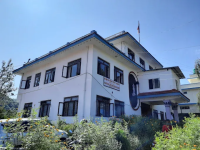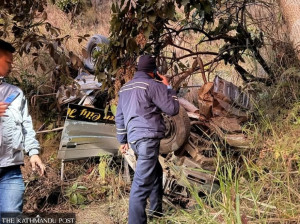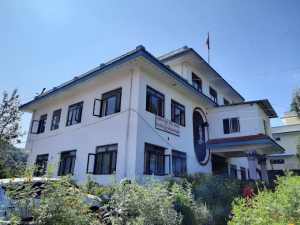Bagmati Province
Red panda conservation plan in limbo
Gaurishankar Conservation Area Project is struggling to initiate red panda conservation efforts due to a lack of funds and human resources.
Tika Prasad Bhatta
Conservation of red panda, the shy and charismatic endangered mammal species, in Gaurishankar Conservation Area Project (GCAP) has hit a snag with its plan to declare Marbu area of Dolakha district as Red Panda Zone left in limbo due to the lack of human resources and required budget.
“We were planning to declare Marbu and Chankhu of Dolakha and Chuchure of Ramechhap as the Red Panda Zone last year. But it could not happen since we neither have budget nor employees,” said Satya Narayan Sah, chief at the project. According to him, works related to red panda count and conservation of its habitats are yet to begin.
The project had aimed to initiate red panda conservation efforts after declaring Marbu as the Red Panda Zone. According to Sah, the Covid-19 pandemic ruined the project’s conservation plan last year. Later human resources and the budget of the GCAP were cut off. Sah said that he repeatedly urged the higher authorities to manage employees and budget for red panda conservation but to no avail.
“The project is struggling to implement additional conservation plans and is struggling to continue its ongoing works to control poaching and smuggling,” said Sah, adding that some of the check posts at GCAP have been closed down due to the shortage of human resources.
Conservationists are worried about the poaching of red pandas, locally known as habre, in the GCAP that abuts the Solukhumbu district. “We can do nothing except worrying about it. We are in no condition to keep a check on the hunting of red pandas in the GCAP area since we do not have enough manpower to run patrols,” said Sah. According to him, a lack of awareness among people about red pandas has led to a rise in the poaching of these mammals. “People kill red pandas for sport. They fall easy prey to poachers,” he added.
A red panda was first spotted in the Chuchure area of Ramechhap district eight years ago. The red panda recovered in Chuchure was sent to the Central Zoo in Kathmandu. Though the official count of the red pandas is yet to be carried out in the area it is estimated that Marbu, Chankhu and Chuchure are home to around 40 red pandas.
According to conservationists, red panda conservation is challenging in the country mainly due to the haphazard road construction through red panda habitat, deforestation, forest fire, poaching, excessive grazing, attack from predators and loss of food. Moreover, parasitic infections found in red pandas during a recent study is a challenge in conserving the animals, conservationists say.
Red pandas are mostly found in temperate forests in the altitudinal range of 2,500
metres to 4,800 with an abundance of bamboo in Nepal, India, Bhutan, northern Myanmar and southwestern China. There are fewer than 10,000 red pandas in the world, say conservationists. The red panda population in Nepal is estimated to be somewhere around 500.
The National Red Panda Survey, conducted in 2016, recorded their presence in 23 districts. The study also showed that the mammal had disappeared from three districts
where they were previously found—Kaski, Manang and Gorkha.
Gaurishankar Conservation Area Project, which was established in 2010 covering 2,179 square kilometres in Dolakha, Ramechhap and Sindhupalchok districts, is the habitat of red pandas, snow leopards, Himalayan bears, gorals, and tahrs among other wildlife.




 5.39°C Kathmandu
5.39°C Kathmandu (1).jpg)












